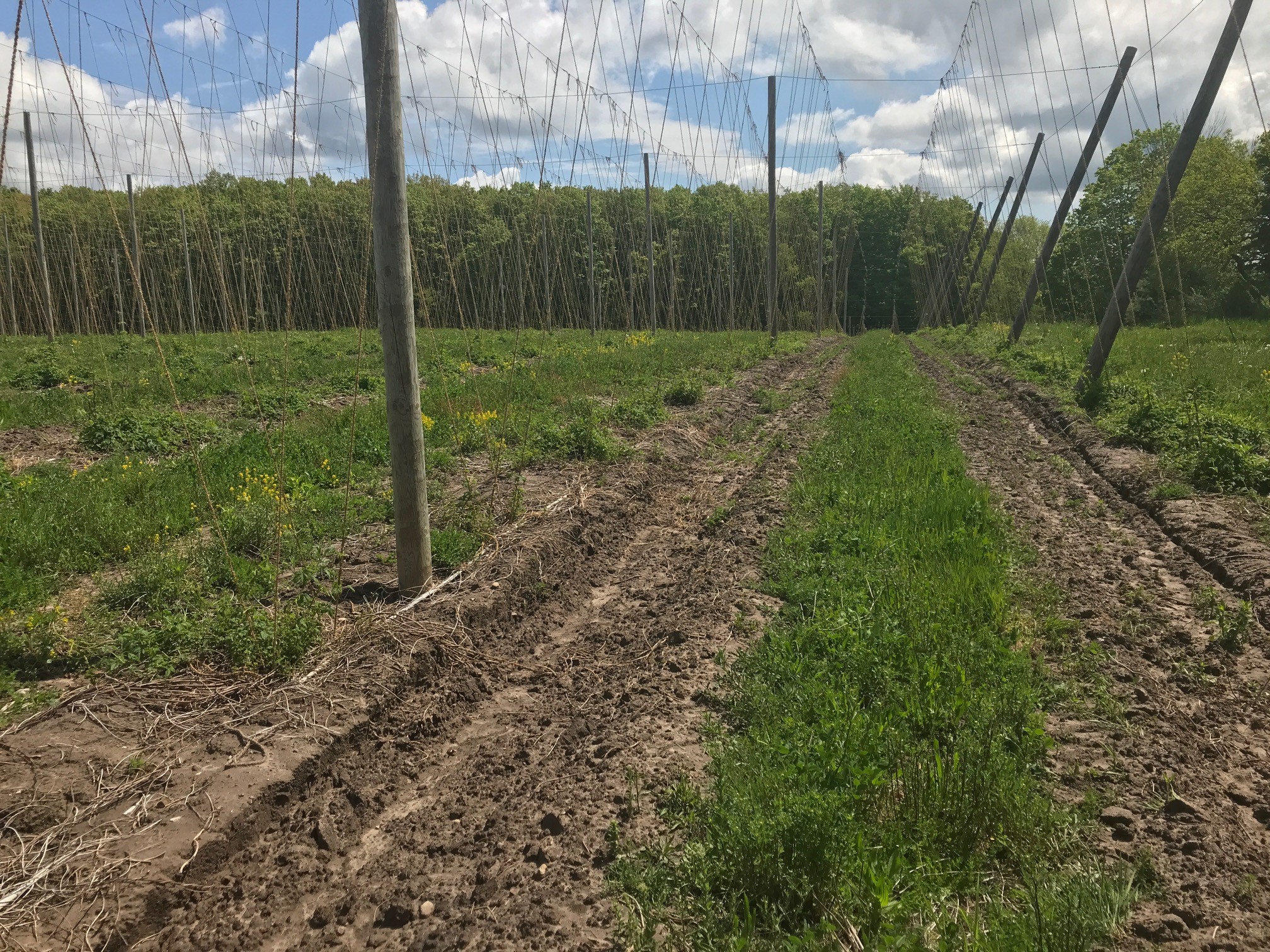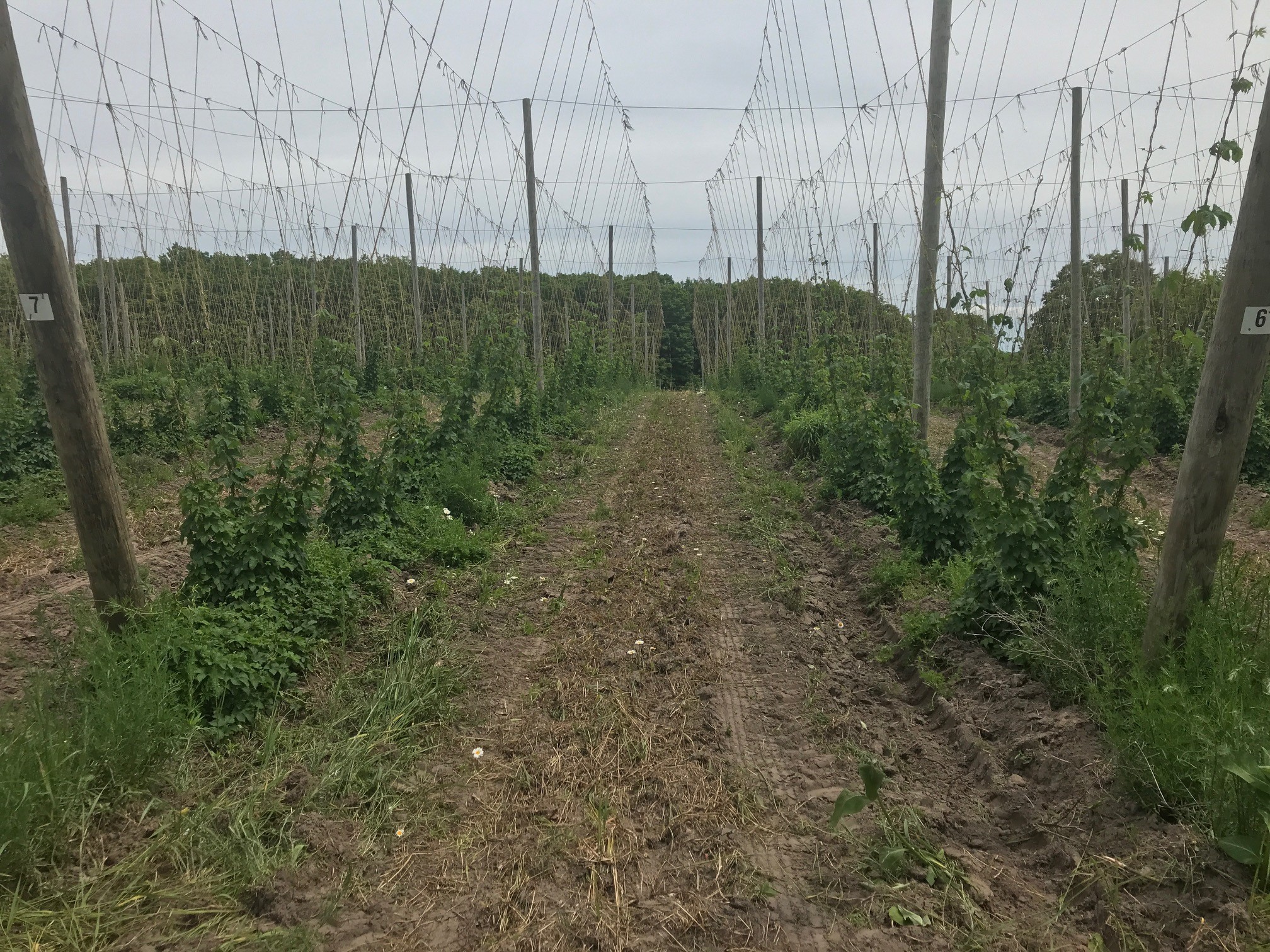Benefits of side-disking hop rows
Side disking helps prevent cross cultivation, reduces weeds and prevents alley growth.

There are multiple cultural practices that can be employed in hop agroecosystems to improve production and yields. One such practice is side-disking. Hop growers use an offset disc to till 2-3 feet in the alleys along each side of the hop rows. Side disking serves multiple purposes. First, it cuts any bines thereby concentrating production in the 3-4 ft. hop rows where the hop plants receive fertilizer and water. This also prevents the hops from growing into or across the alley, and any potential for mixing cultivars. Second, it can help reduce competition from weeds. One method of side-disking, referred to as “earthing-up” (Rybáček, 1991), involves the movement of soil from the alleys into the hop rows. Any young hop shoots that are covered with soil will change to roots, increasing the number of small roots and root hairs and nutrient uptake.
Most growers side-disk 2-3 times per season. The timing of side disking or “earthing-up” will depend upon local soil and hydrological conditions and degree of weed growth. In general the first side disking occurs right after training (late May-early June in Michigan). Growers could disk a second time in late June, but should avoid disking during reproductive growth (burr stage- harvest) since disking can destroy surface root hairs necessary to maximize yield. Some growers will also disk post-harvest in October as well.


For those interested in additional aspects of hop production, please sign up for the MSU Bine and Dine Hop Webinar Series.
September 8, 2020
- Pest update
- Post-harvest practices in the field (eg. cover crops)
For more hop resources please visit www.hops.msu.edu. For questions related to other agricultural topics please visit Michigan State University Extension, where you can find many outstanding resources.
This material is based upon work supported by the National Institute of Food and Agriculture, U.S. Department of Agriculture, under Agreement No. 2015-09785. Any opinions, findings, conclusions, or recommendations expressed in this publication are those of the author(s) and do not necessarily reflect the view of the U.S. Department of Agriculture.



 Print
Print Email
Email
